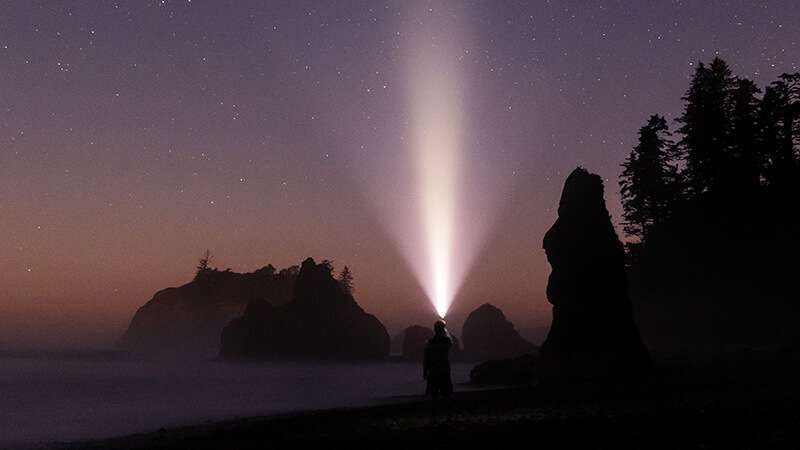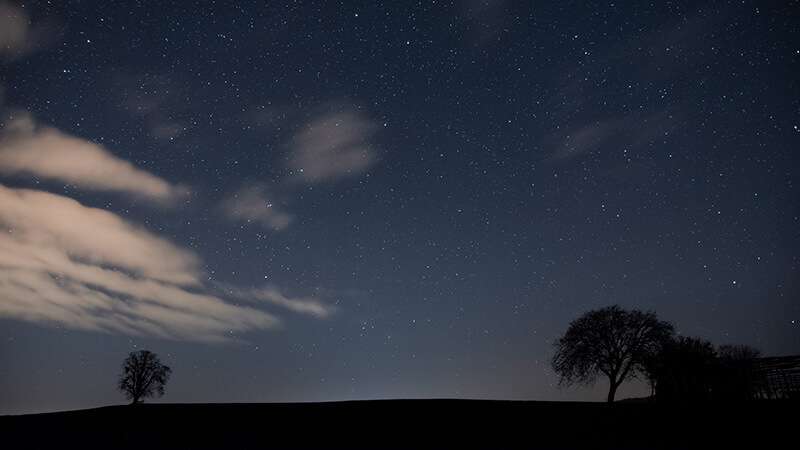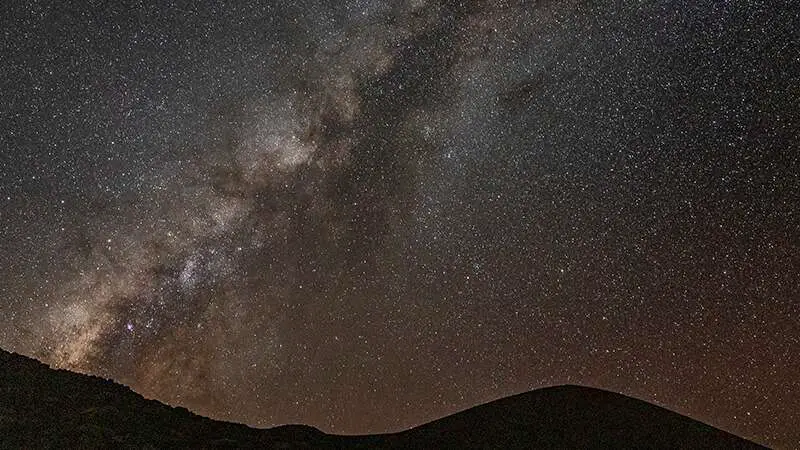Stargazing allows us to marvel at the beauty of the night sky, observe celestial bodies, and connect with the universe. However, many factors can affect the quality of stargazing, including humidity. So, exactly how does humidity affect stargazing?
When the humidity of the air is relatively high, water vapors condense, forming dew onto a particular surface at a certain temperature level. This water vapor can cause the night sky to appear hazy or blurry, reducing the transparency and making it difficult to see stars and other celestial bodies.
In this article, you get
The effects of humidity on stargazing
Glossary of key terms regarding stargazing conditions
Stargazing tips for seeing the milky way or a meteor shower in humid conditions
By the end of this article, you’ll understand how humidity affects your stargazing conditions and much more!
Let’s dive right in.
Recommended For You
How Does Humidity Affect Stargazing? The Basics

Does humidity affect stargazing? Yes! When it comes to stargazing, humidity can significantly impact your viewing experience.
With high moisture, water vapor can condense and form dew on surfaces, including your telescope, binoculars, or lenses. This moisture level can cause them to fog up, making it difficult to see the big dipper constellation, the north star, and other celestial objects.
Humidity can also affect the transparency of the air. Transparent conditions refer to the clarity of the sky.
If there is no humidity or dust, then the transparency is good. Low transparency can make seeing fainter stars and other celestial objects challenging.
It’s important to note that humidity isn’t the only factor that affects stargazing. Other factors, such as light pollution, air pollution, and cloud cover, can also impact your viewing experience. However, humidity is a factor that you can control to some extent.
One way to reduce the impact of humidity is to wait for a clear, cold night.
When the temperature is low, the moisture is less likely to condense and form dew on your equipment. You can also use a dew shield or heater to prevent dew from forming on your lenses and other surfaces.
FREE STARGAZING CHECKLIST
My 5-page Stargazing Checklist will enhance your astronomical observations.
Follow this free checklist to navigate the night sky with confidence, clarity, and a sense of preparedness for a rewarding stargazing experience.

The Effects of Humidity on Stargazing
Decreased Visibility

High humidity levels can decrease visibility, as water droplets in the air scatter light and reduce the contrast between the stars and the background sky.
When stargazing or doing astrophotography, you’re always looking for clear night skies – this typically happens when the temperature is low, especially during cold winter nights.
Faint objects like galaxies and nebulae can be challenging to see, even under the best conditions. When high humidity levels, these objects may appear more washed-out or invisible to the naked eye or even through a telescope.
Increased Light Pollution
When the air has high relative humidity, then anything that disturbs the air, causing pressure changes, can cause water droplets to show.
On a small scale, you can see condensation from aircraft wingtips on landing.
High humidity levels can also increase light pollution, as the water droplets in the air scatter light from streetlights and other sources, making it harder to see the stars.
This effect is particularly noticeable in urban areas, where there is already a high level of light pollution. High humidity levels can worsen light pollution, making it difficult to see even the brightest stars in the sky.
Increased Atmospheric Turbulence

Does humidity cause turbulence? Yes, high humidity levels can increase atmospheric turbulence, which can cause stars to twinkle or appear to move around in the sky.
Twinkling stars can be particularly frustrating for stargazers trying to observe faint objects or details on planets or moons. The increased atmospheric turbulence can make getting a clear and steady view difficult, even with a high-quality telescope.
Stargazing Tips in Humid Conditions
Stargazing can be a magical experience, but when humidity is high, it can be challenging to get clear views of the night sky. Here are some tips to help you maximize your stargazing experience in humid conditions.
Choosing the Right Time and Place

When humidity is high, it is best to stargaze on nights when the temperature is low, especially during a cold winter night. You should also choose a location far from sources of moisture, such as bodies of water or areas with high vegetation.
Using the Right Equipment

Using the right equipment can significantly impact your stargazing experience in humid conditions.
A telescope with a larger aperture will help you see fainter objects in the sky. It would help if you also used a dew shield or heater to prevent moisture from forming on the lens of your telescope.
Alternatively, a pair of binoculars can help you see more of the sky and is less affected by water than a telescope.
Protecting Your Equipment from Moisture
Moisture can damage your equipment, so it is essential to protect it.
You can use a waterproof cover to protect your telescope and binoculars from humidity. You can also use silica gel packs or a dehumidifier to remove moisture from your storage area. When you have finished stargazing, store your equipment in a dry place.
The Best Conditions for Stargazing
Regarding stargazing, the best conditions involve clear skies and low humidity.
High humidity can cause fogging on telescopes, making it difficult to see the stars. The less moisture there is in the air, the clearer and sharper the view of the stars will be.
Another factor to consider is transparency. Transparent conditions refer to the clarity in the sky. If there is no humidity or dust, then the transparency is good. Transparency is typically better in colder weather so lower humidity can benefit stargazing.
Plan for stargazing on nights with a clear sky, meaning no cloud cover, low humidity, and reduced dust. You can see stars better in the winter months when there is typically less humidity in the air.
Higher elevations can also offer better stargazing conditions, as there is often less moisture in the air at higher altitudes.
Glossary of Key Terms regarding Stargazing Conditions
When it comes to stargazing, there are many key terms that you should be familiar with to understand how humidity affects stargazing. Here are some of the most important words:
Seeing
The atmospheric conditions that affect the clarity of the night sky. Good seeing conditions mean clear skies, while poor conditions can make seeing stars difficult.
Transparency
The amount of light that can pass through the atmosphere. High transparency means clear skies, while low transparency can make it difficult to see stars.
Contrast
The difference in brightness between stars and the background sky. High contrast means the stars stand out, while low contrast can make distinguishing stars from the background sky difficult.
Humidity can affect all these conditions, making it more challenging to see your favorite star. When the air is humid, it can create a hazy effect in the sky, reducing transparency and contrast. This haze can make it difficult to see stars, especially faint ones.
In addition to these key terms, there are a few other factors that can affect stargazing conditions:
Light pollution
The amount of artificial light in the environment can make it difficult to see stars.
Altitude
The higher you are above sea level, the clearer the sky.
Weather
Clouds, rain, and other weather conditions can make it difficult to see stars.
Overall, it’s essential to know these key terms and factors when stargazing, especially if you’re trying to view faint stars or other celestial objects.
Understanding how humidity affects stargazing and other conditions allows you to maximize your time under the dark sky.
Frequently Asked Questions
What is the best weather for stargazing?
The best weather for stargazing is typically low humidity and clear skies. Transparency, the amount of light that can pass through the atmosphere, is also essential. Transparency is usually best in the winter and poorest in the summer. Stargazers should also pay attention to seeing conditions, which refer to the atmosphere’s stability, as turbulence can distort the view of celestial objects.
What are some tips for stargazing in cold weather?
Stargazing in cold weather requires proper preparation to stay warm and comfortable. Dressing in layers is essential, as temperatures can drop significantly at night. It’s also important to wear warm and waterproof footwear and to bring gloves, a hat, and a scarf. Stargazers should also bring a thermos with a hot beverage and snacks to stay energized during the session. Finally, a telescope with a heated eyepiece can help prevent fogging and condensation.
What is the difference between seeing and transparency?
Both seeing and transparency are essential factors to consider when planning a stargazing session, as they can significantly affect the quality of the viewing experience. Poor seeing conditions can limit the amount of magnification used during stargazing. Seeing refers to the atmosphere’s stability, which can cause celestial objects to appear wavy or distorted. On the other hand, transparency refers to how clear the sky is and how much light can pass through it. Poor transparency can be caused by factors such as light pollution, haze, or moisture in the air.
Summary
Thank you for reading my article “How Does Humidity Affect Stargazing?”
Humidity can have a significant impact on stargazing.
High humidity can cause fogging, making seeing celestial objects through a telescope challenging.
Water droplets caused by humidity can create haze, increasing skyglow and making it harder to see stars. Skyglow can be combated by using light pollution filters or seeking out areas with low light pollution.
Climate change is likely to harm the quality of astronomical observations due to changes in humidity and other atmospheric conditions.
It is vital to be aware of these factors when planning a stargazing trip or throwing a stargazing party so that you can take steps to minimize their impact.
Read additional articles in my Night Sky series:
- Can You Do Astrophotography with a Full Moon?
- Stargazing After Moonset
- Must-See Brightest Objects in the Night Sky
- What is the Bortle Scale Chart?
- Does a Full Moon Affect Stargazing?
- How Much of the Night Sky Do We See?
- Effects of Light Pollution
- What are the Best Stargazing Conditions?
- What is Astronomical Seeing?




